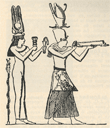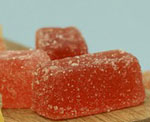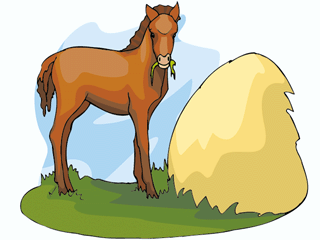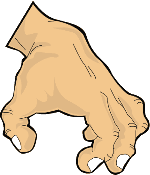Vinegar History
How the Ancients Benefited
from Vinegar
Vinegar is one of nature's great gifts to mankind, and vinegar history shows us why. It is a truly natural product. Any alcoholic beverage, whether it is made from apples, grapes, dates, rice or plain white sugar, once exposed to air, will turn naturally to vinegar. It is the ever-present bacteria in the air that converts the alcohol in cider, wine, and beer, into acetic acid, which gives vinegar its characteristic sharp sour taste. So it is safe to say that man has been exposed to vinegar since before recorded vinegar history.
 Recorded vinegar history starts around 5000 BC, when the Babylonians were using the fruit of the date palm to make wine and vinegar. They used it as a food and as a preserving or pickling agent. Vinegar residues have been found in ancient Egyptian urns traced to 3000 BC. As well, recorded vinegar history in China starts from texts that date back to 1200 BC.
Recorded vinegar history starts around 5000 BC, when the Babylonians were using the fruit of the date palm to make wine and vinegar. They used it as a food and as a preserving or pickling agent. Vinegar residues have been found in ancient Egyptian urns traced to 3000 BC. As well, recorded vinegar history in China starts from texts that date back to 1200 BC.
During biblical times, vinegar was used to flavor foods, as an energizing drink, and as a medicine, and it is mentioned in both the old and new testaments. For example, after working hard gleaning barley in the fields, Ruth was invited by Boaz to eat bread and dip it in vinegar. (Ruth 2:14)
 In ancient Greece, around 400 BC, Hippocrates, the father of modern medicine, prescribed apple cider vinegar mixed with honey for a variety of ills, including coughs and colds.
In ancient Greece, around 400 BC, Hippocrates, the father of modern medicine, prescribed apple cider vinegar mixed with honey for a variety of ills, including coughs and colds.
Military Benefits
Vinegar history provides many examples of this liquid's usefullness to everyday soldiers. Diluted vinegar has been used as a strengthening and energizing tonic by the military throughout the ages. Roman soldiers called this refreshing drink "posca", and used it regularly as did the Japanese samurai. The addition of vinegar to drinking water had the additional benefit of killing any infectious agents that might have been present.
Throughout history the antiseptic nature of vinegar has been used to clean and disinfect soldiers wounds and thus speed up wound healing. Apple cider vinegar was used to this effect during the American civil war and as late as world war one.
Click here for a review of Apple Cider Vinegar History in early America.
Vinegar's dissolving power was put to use by the Carthaginian general Hannibal when he crossed the Alps with elephants to invade Italy in 218 BC. Vinegar was poured over hot boulders to crumble them and allow his troops to march through.
Louis XIII of france (1601-1643) is reported to have paid 1.3 million francs for the vinegar used to cool the cannons of his army during just one of his many battles. Vinegar, when applied to the hot iron cannons not only cooled them but helped clean the surface metal while inhibiting rust formation.
During the Middle Ages vinegar, along with an abrasive material such as sand, was used to clean and polish flexible mail armor.
Vinegar History has Revealed Some Surprising Uses
 Around 40 BC legend has it that Cleopatra, queen of Egypt, won a wager with the roman general Mark Anthony, when after a lavish meal, she dissolved a priceless pearl in vinegar and then drank the resulting solution. By doing this she proved that she could provide a feast for the two of them that would cost a fortune!
Around 40 BC legend has it that Cleopatra, queen of Egypt, won a wager with the roman general Mark Anthony, when after a lavish meal, she dissolved a priceless pearl in vinegar and then drank the resulting solution. By doing this she proved that she could provide a feast for the two of them that would cost a fortune!
Vinegar was well known to the European alchemists of the Middle Ages. By pouring it over lead, they made a sweet tasting substance they called "sugar of lead", which was used well into the nineteenth century to smooth and sweeten a harsh cider. Unfortunately lead acetate is also very poisonous and it caused the early death of many a European cider drinker. (Vinegar should never be stored in metallic containers made from lead, copper, or iron nor in crystal glass, which contains a high level of lead.)
From 1347 to 1771 many european cities were repeatedly hit by the bubonic plague. It is estimated that about 50 million people died in all from this disease which was spread from rats to man by infected fleas.
from this disease which was spread from rats to man by infected fleas.
In 1721, the Bubonic Plague hit many French cities so hard that all the dead could not be decently buried.To cope with this situation, the French authorities released condemned convicts from prison to help bury the highly infectious corpses.
According to legend, while most died, one team of four convicted thieves managed to survive by drinking daily large amounts of vinegar infused with garlic. As a result vinegar steeped in garlic is still sold today as four thieves vinegar.
By holding vinegar soaked sponges to their noses, European aristocrats of the seventeenth and eighteenth centuries were able to ward off the noxious odors of outdoor garbage and raw sewage.
Small silver boxes called vinaigrettes were used to carry these sponges and they were also stored in special compartments in the heads of walking canes.
Vinegar goes Commercial Big Time
In 1394, a group of French vintners developed a continuous method for making vinegar called the Orleans method. In this method, oak barrels were used as fermentation vessels and the vinegar was siphoned off through a spigot at the bottom of the barrel. About 15% of the vinegar was left behind which contained the "mother of vinegar" and its concentrated bacteria floating on top. A new batch of cider or wine was carefully added to the barrel and was quick started by the remaining vinegar.
The French vintners formed a guild of master vinegar makers, and using this Orleans method, they were better able to supply the lucrative vinegar market.
The vinegar industry in Europe flourished during the renaissance and many flavored vinegars were made with various spices, herbs, fruits and even flowers. By the eighteenth century there were over one hundred varieties of infused vinegars available.






